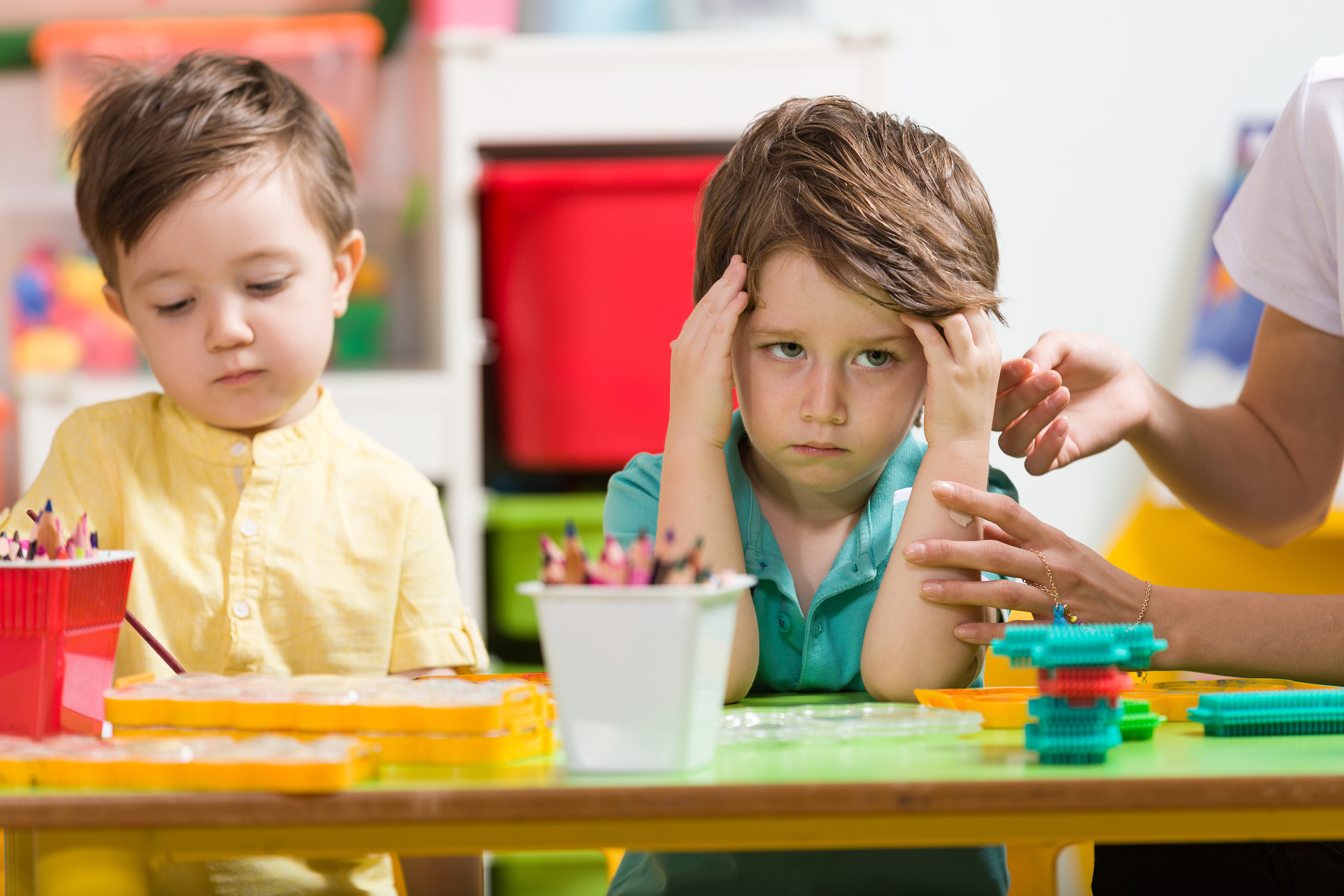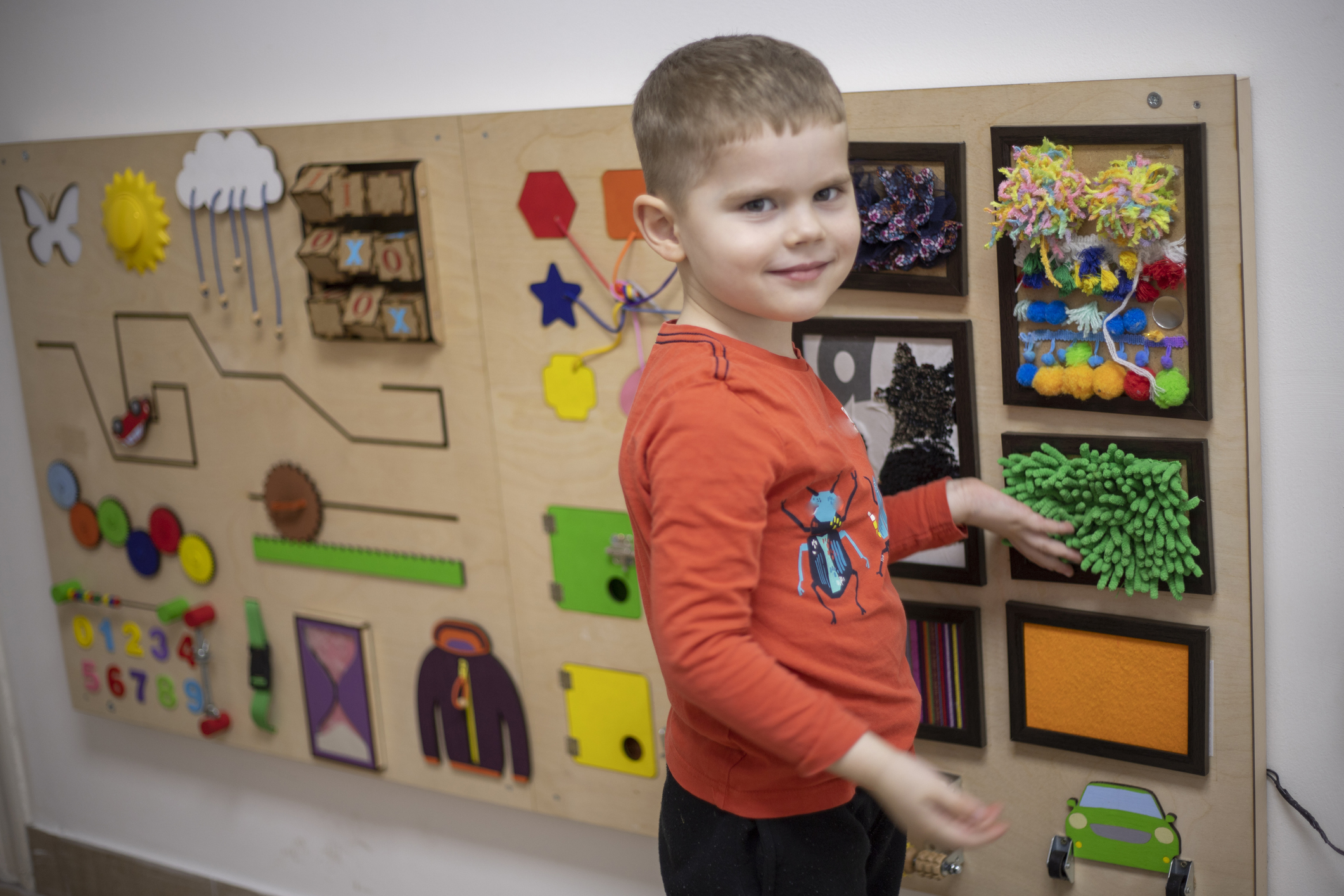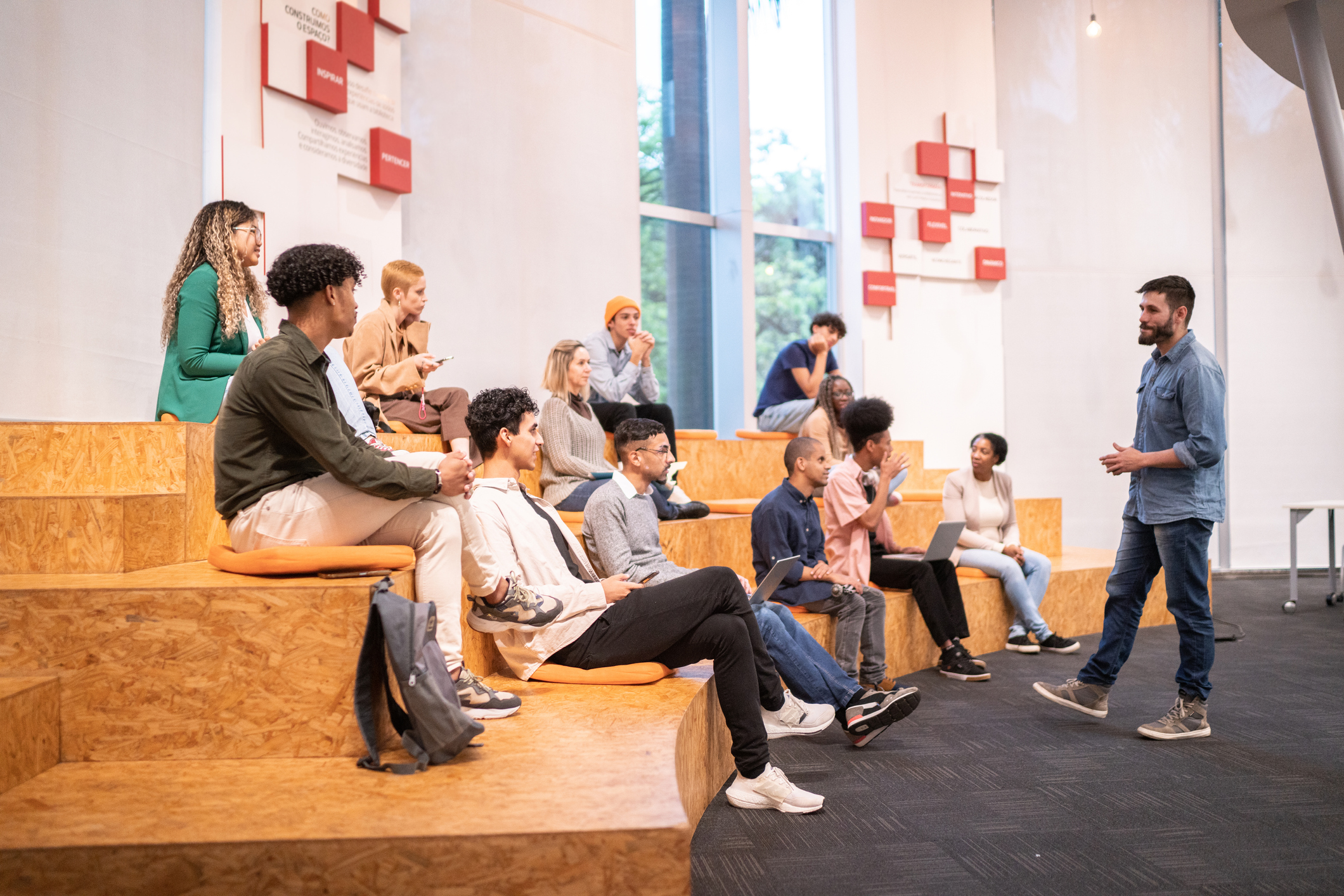In today’s rapidly evolving educational landscape, engaging students in the classroom is more important than ever. As educators, we constantly strive to create an environment that sparks curiosity and ignites a passion for learning. However, with the multitude of distractions and competing interests that students face, capturing their interest can be a challenge.
In this blog post, we will explore a variety of strategies and techniques to effectively engage students in the classroom. We will delve into the importance of student engagement and its impact on academic success. Additionally, we will provide practical tips on creating an inviting classroom environment that fosters active participation and enthusiasm for learning.
One key aspect we will focus on is classroom design and layout. The physical space of the classroom plays a crucial role in student engagement. We will discuss how to optimise the arrangement of desks, utilise visual aids, and incorporate elements that encourage collaboration and interaction.
Furthermore, we will explore the role of technology and multimedia in engaging students. We will examine how incorporating digital resources and interactive tools can enhance lesson plans and cater to different learning styles. Additionally, we will delve into the power of project-based learning, hands-on activities, and other experiential learning methods that allow students to actively participate and apply their knowledge.
Beyond the physical environment and lesson plans, we will also explore strategies for promoting active student participation. We will discuss the value of group work and collaboration, as well as techniques for empowering students to have a voice and make choices in their learning. Additionally, we will explore effective questioning techniques that stimulate critical thinking and encourage students to actively engage with the subject matter.
Finally, we will address the importance of assessing student engagement and monitoring progress. We will explore formative assessment strategies, gathering and utilizing student feedback, and adjusting teaching strategies to better meet the needs and interests of students.
By implementing these engaging strategies in the classroom, we can create a dynamic and stimulating learning environment that captivates students’ attention and fosters a love for learning. So let’s dive in and discover the best ways to spark student interest and unlock their full potential in the classroom!
Understanding the Importance of Student Engagement
To effectively engage students in the classroom, it is crucial to understand the significance and impact of student engagement on their overall academic success. When students are actively engaged, they are more motivated, attentive, and willing to participate in the learning process.
Engagement goes beyond mere compliance or surface-level involvement. It involves capturing students’ interest, connecting with their prior knowledge and experiences, and making learning meaningful and relevant to their lives. Engaged students are more likely to retain information, apply critical thinking skills, and develop a deeper understanding of the subject matter.
One of the primary benefits of student engagement is improved academic achievement. Engaged students are more likely to perform well on assessments, demonstrate higher levels of comprehension, and exhibit a greater ability to transfer knowledge to real-world situations. When students are actively engaged, they become active participants in their learning journey, taking ownership of their education and striving for excellence.
Furthermore, student engagement fosters a positive classroom environment. When students are engaged, they are more likely to feel connected to their peers and teachers, leading to a sense of belonging and community within the classroom. This, in turn, promotes a collaborative and supportive learning environment where students feel safe to take risks, express their ideas, and engage in meaningful discussions.
Moreover, student engagement has a significant impact on student motivation. When students are engaged, they develop a sense of curiosity and intrinsic motivation to explore and learn. This intrinsic motivation is crucial for long-term success and a lifelong love for learning. It helps students develop a growth mindset, embrace challenges, and persist in the face of setbacks.
Additionally, student engagement promotes the development of essential 21st-century skills. Through active participation and engagement, students acquire critical thinking, problem-solving, communication, collaboration, and creativity skills. These skills are highly valued in today’s rapidly changing world and are essential for success in higher education and future careers.
Understanding the importance of student engagement allows educators to prioritize strategies and techniques that foster active participation in the classroom. By creating an engaging learning environment, educators can unlock the full potential of their students, cultivate a love for learning, and set them on a path towards lifelong success.
Creating an Inviting Classroom Environment
Creating an inviting classroom environment is a foundational step in sparking student interest and fostering engagement. When students feel comfortable, safe, and connected to their learning environment, they are more likely to actively participate and be motivated to learn. In this section, we will explore the role of classroom design in student engagement and provide practical tips for setting up an engaging classroom.
The Role of Classroom Design in Student Engagement
The physical layout and design of the classroom can significantly impact student engagement. A well-designed classroom can create a positive atmosphere, promote collaboration, and facilitate learning. Here are some key considerations for classroom design:
- Flexible Seating: Providing flexible seating options, such as bean bags, standing desks, or floor cushions, allows students to choose a seating arrangement that best suits their learning needs and preferences. It promotes comfort and autonomy, enabling students to focus and engage more effectively.
- Optimised Desk Arrangement: The arrangement of desks can influence student interactions and collaboration. Consider different desk configurations, such as clusters or groups, to encourage teamwork and communication. Avoid rows of desks that may hinder collaboration and create barriers between students.
- Ample Space for Movement: Allowing space for students to move around freely promotes an active learning environment. Incorporate open areas or designated zones for group activities, presentations, and hands-on learning. Movement can energise students and enhance their engagement in the learning process.
- Visual Appeal: Create a visually appealing classroom environment by incorporating colourful displays, student work, educational posters, and relevant visuals that enhance the learning experience. Visual stimuli can capture students’ attention and make the learning environment more engaging.
Practical Tips for Setting Up an Engaging Classroom
In addition to considering the design elements of the classroom, there are practical strategies that educators can implement to create an engaging classroom environment. Here are some tips:
- Establish Clear Expectations: Set clear expectations and guidelines for behaviour and participation in the classroom. When students understand what is expected of them, they feel more secure and are more likely to actively engage in the learning process.
- Create a Welcoming Atmosphere: Foster a positive and inclusive classroom culture by creating a welcoming atmosphere. Greet students with a warm smile, display a positive attitude, and encourage respect and kindness among peers. Building positive relationships with students creates a supportive learning environment that encourages engagement.
- Personalise the Space: Incorporate elements that reflect the interests, backgrounds, and cultures of your students. Display diverse books, artwork, and learning materials that represent the students’ identities and experiences. This personalization helps students feel valued and connected to the classroom environment.
- Organise and Display Resources: Ensure that learning materials and resources are easily accessible and well-organised. Clearly label and display materials, books, and supplies so that students can independently access them. This promotes student autonomy and engagement in the learning process.
- Utilise Technology: Incorporate technology tools and resources that enhance learning experiences. Interactive whiteboards, tablets, and educational apps can provide opportunities for interactive learning, multimedia presentations, and collaborative projects. Integrating technology in the classroom can increase engagement and cater to different learning styles.
By creating an inviting classroom environment, educators can lay the foundation for student engagement and set the stage for an enriching learning experience. The physical design, coupled with supportive practices, fosters a positive atmosphere that encourages active participation and ignites students’ curiosity and interest in learning.
Developing Engaging Lesson Plans
Developing engaging lesson plans is essential for capturing students’ interest and promoting active participation in the learning process. In this section, we will explore various strategies and techniques to create lesson plans that are both educational and captivating.
Incorporating Multimedia and Technology
Integrating multimedia and technology into lesson plans can significantly enhance student engagement. Here are some ways to incorporate multimedia and technology:
- Interactive Presentations: Utilise interactive presentation tools, such as PowerPoint, Prezi, or Google Slides, to create visually appealing and interactive lessons. Incorporate images, videos, and animations to illustrate concepts and engage students’ visual and auditory senses.
- Educational Videos: Integrate educational videos, documentaries, or online resources to provide visual and auditory learning opportunities. Videos can bring abstract concepts to life, spark discussion, and cater to different learning styles.
- Virtual Field Trips: Take students on virtual field trips using online platforms that allow them to explore museums, historical sites, or natural wonders. Virtual field trips provide immersive experiences, allowing students to connect with the subject matter uniquely and engagingly.
- Gamification: Gamify lessons by incorporating educational games or interactive quizzes. Online platforms like Kahoot or Quizizz can make learning fun and competitive, encouraging active participation and knowledge retention.
Using Project-Based Learning
Project-based learning (PBL) is a student-centred approach that promotes engagement and deep learning. Here are some key considerations for implementing PBL:
- Real-World Relevance: Design projects that connect to real-world problems or scenarios. When students see the practical applications of their learning, they become more motivated and engaged.
- Collaborative Projects: Encourage collaboration and teamwork by assigning group projects. Collaborative projects foster communication skills, critical thinking, and problem-solving abilities, while also promoting engagement through peer interaction.
- Choice and Autonomy: Provide students with choices and autonomy in selecting project topics or approaches. When students have ownership over their learning, they are more motivated and invested in the project.
- Authentic Assessment: Assess student learning through authentic assessments, such as presentations, demonstrations, or portfolios. Authentic assessments allow students to showcase their understanding and skills in a meaningful and engaging way.
The Power of Hands-On Activities
Hands-on activities provide students with tactile and kinesthetic learning experiences that enhance engagement and understanding. Here are some ideas for incorporating hands-on activities:
- Experiments and Demonstrations: Conduct science experiments or demonstrations that allow students to observe and interact with concepts firsthand. Hands-on experiments spark curiosity and foster a deeper understanding of scientific principles.
- Simulations and Role-Playing: Engage students in simulations or role-playing activities that recreate real-life scenarios. This hands-on approach allows students to apply knowledge, make decisions, and experience the subject matter in a practical context.
- Creative Projects: Assign creative projects, such as art, music, or writing activities, that encourage self-expression and engagement. Creative projects provide students with an outlet for their imagination and allow them to showcase their understanding in unique ways.
- Manipulatives and Models: Provide students with manipulatives or models to explore abstract concepts tangibly. Manipulatives, such as blocks, counters, or geometric shapes, help students visualise and manipulate ideas, enhancing their understanding and engagement.
By incorporating multimedia and technology, implementing project-based learning, and integrating hands-on activities, educators can develop lesson plans that captivate students’ interest and promote active learning. These strategies encourage students to connect with the subject matter, apply their knowledge, and develop a deeper understanding of the concepts being taught.
Strategies for Active Student Participation
Promoting active student participation is key to fostering engagement and creating a dynamic learning environment. When students actively participate in the classroom, they become active contributors to their learning journey. In this section, we will explore strategies and techniques to encourage active student participation.
The Value of Group Work and Collaboration
Encouraging group work and collaboration can significantly enhance student participation. Here are some strategies to promote collaborative learning:
- Group Discussions: Organise group discussions where students can share their ideas, perspectives, and insights. Encourage active listening, respectful communication, and the exchange of diverse viewpoints. Group discussions stimulate critical thinking, promote deeper understanding, and engage students in meaningful dialogue.
- Cooperative Learning Activities: Assign cooperative learning activities that require students to work together to achieve a common goal. These activities can be in the form of group projects, problem-solving tasks, or debates. Cooperative learning fosters teamwork, communication skills, and active engagement.
- Peer Tutoring: Implement peer tutoring programs where students take turns teaching and learning from one another. This peer-to-peer interaction not only enhances understanding but also promotes active participation and builds a supportive classroom community.
Promoting Student Voice and Choice
Empowering students to have a voice and make choices in their learning is crucial for active participation. Here are some strategies to promote student voice and choice:
- Student-Led Discussions: Allow students to lead discussions on topics of interest or relevance. This encourages ownership of learning, boosts confidence, and promotes active engagement.
- Choice in Assignments: Provide options and flexibility in assignments to cater to students’ interests and learning preferences. Offering choices allows students to feel a sense of autonomy and fosters motivation and engagement.
- Student-Led Projects: Encourage students to design and lead their projects based on their passions or areas of expertise. This promotes self-directed learning, active engagement, and a sense of ownership over their education.
Effective Questioning Techniques
Asking effective questions is a powerful tool for promoting active student participation and critical thinking. Here are some techniques to enhance questioning:
- Open-Ended Questions: Pose open-ended questions that require students to think critically and provide thoughtful responses. Open-ended questions stimulate discussion, encourage higher-order thinking, and invite diverse perspectives.
- Wait Time: Give students sufficient wait time after asking a question to allow them to process and formulate their responses. Waiting for students to think before responding encourages deeper engagement and more thoughtful contributions.
- Probing Questions: Follow up on student responses with probing questions to deepen their understanding and encourage further reflection. Probing questions challenge students to think more deeply, articulate their thoughts, and engage in meaningful dialogue.
By implementing strategies that promote group work and collaboration, provide opportunities for student voice and choice, and utilise effective questioning techniques, educators can cultivate active student participation in the classroom. These strategies empower students to take ownership of their learning, develop critical thinking skills, and actively engage with the subject matter.
Assessing Student Engagement
Assessing student engagement is crucial for understanding the effectiveness of teaching strategies and making informed instructional decisions. By regularly assessing student engagement, educators can identify areas of improvement, tailor instruction to meet students’ needs and ensure that students are actively participating in the learning process. In this section, we will explore various strategies and techniques for assessing student engagement.
Using Formative Assessment Strategies
Formative assessments provide ongoing feedback on student learning progress and engagement. Here are some formative assessment strategies:
- Observation: Engage in active observation of students during class activities, discussions, and group work. Observe their level of participation, attentiveness, and interaction with peers. This allows educators to gauge student engagement in real time and make immediate instructional adjustments if needed.
- Exit Tickets: Use exit tickets at the end of a lesson to assess students’ understanding and engagement. Ask open-ended questions or have students reflect on their learning experience. Exit tickets provide valuable insights into student comprehension and engagement levels.
- Quick Checks: Conduct quick checks during class, such as quizzes, polls, or thumbs up/thumbs down responses, to gauge student understanding and engagement. These brief assessments allow educators to monitor comprehension and adjust instruction accordingly.
Gathering and Utilizing Student Feedback
Seeking feedback from students provides valuable insights into their engagement and perceptions of the learning experience. Here are some strategies for gathering and utilising student feedback:
- Surveys and Questionnaires: Administer surveys or questionnaires to gather feedback on students’ perceptions of their engagement in class. Ask specific questions about their level of interest, participation, and the effectiveness of instructional strategies. Analyse the data collected to identify trends and areas for improvement.
- One-on-One Conferences: Hold individual conferences with students to discuss their engagement and learning experience. This personalised approach allows for more in-depth conversations and provides opportunities for students to express their thoughts and concerns.
- Student Reflections: Assign regular reflection activities where students can reflect on their engagement and learning. Prompts can include questions about their level of interest, areas of improvement, and suggestions for enhancing engagement. Students’ reflections can provide valuable insights for educators to adjust instructional approaches.
Monitoring Progress and Adjusting Strategies
Monitoring student progress and adjusting instructional strategies based on the data collected is essential for promoting continuous engagement. Here are some techniques for monitoring progress:
- Data Analysis: Analyse formative assessment data, student feedback, and other relevant data to identify patterns and trends in student engagement. Use this information to make informed decisions about instructional adjustments and interventions.
- Ongoing Reflection: Engage in regular self-reflection as an educator to assess the effectiveness of instructional strategies in promoting student engagement. Reflect on student feedback, classroom observations, and assessment data to identify areas for improvement.
- Collaborative Discussions: Engage in collaborative discussions with colleagues and educational professionals to share insights, strategies, and best practices for assessing and promoting student engagement. Collaboration allows for a collective approach to finding effective solutions.
By utilizing formative assessment strategies, gathering and utilizing student feedback, and continuously monitoring progress, educators can effectively assess student engagement. This assessment process provides valuable information to guide instructional decisions, improve teaching strategies, and create a learning environment that maximizes student engagement and fosters optimal learning outcomes.
Related posts:
 The Impact of Trauma on Learning: Creating Trauma-Sensitive Classroom Environments
The Impact of Trauma on Learning: Creating Trauma-Sensitive Classroom Environments
 Understanding Adverse Childhood Experiences (ACEs): A Guide for Incorporating Trauma-Informed Approaches into Teaching
Understanding Adverse Childhood Experiences (ACEs): A Guide for Incorporating Trauma-Informed Approaches into Teaching
 Creating Safe Spaces: Strategies for Fostering Healing and Support in Trauma-Informed Classrooms
Creating Safe Spaces: Strategies for Fostering Healing and Support in Trauma-Informed Classrooms
 Empowering Students’ Voices: Promoting Agency and Resilience in Trauma-Informed Classrooms
Empowering Students’ Voices: Promoting Agency and Resilience in Trauma-Informed Classrooms



